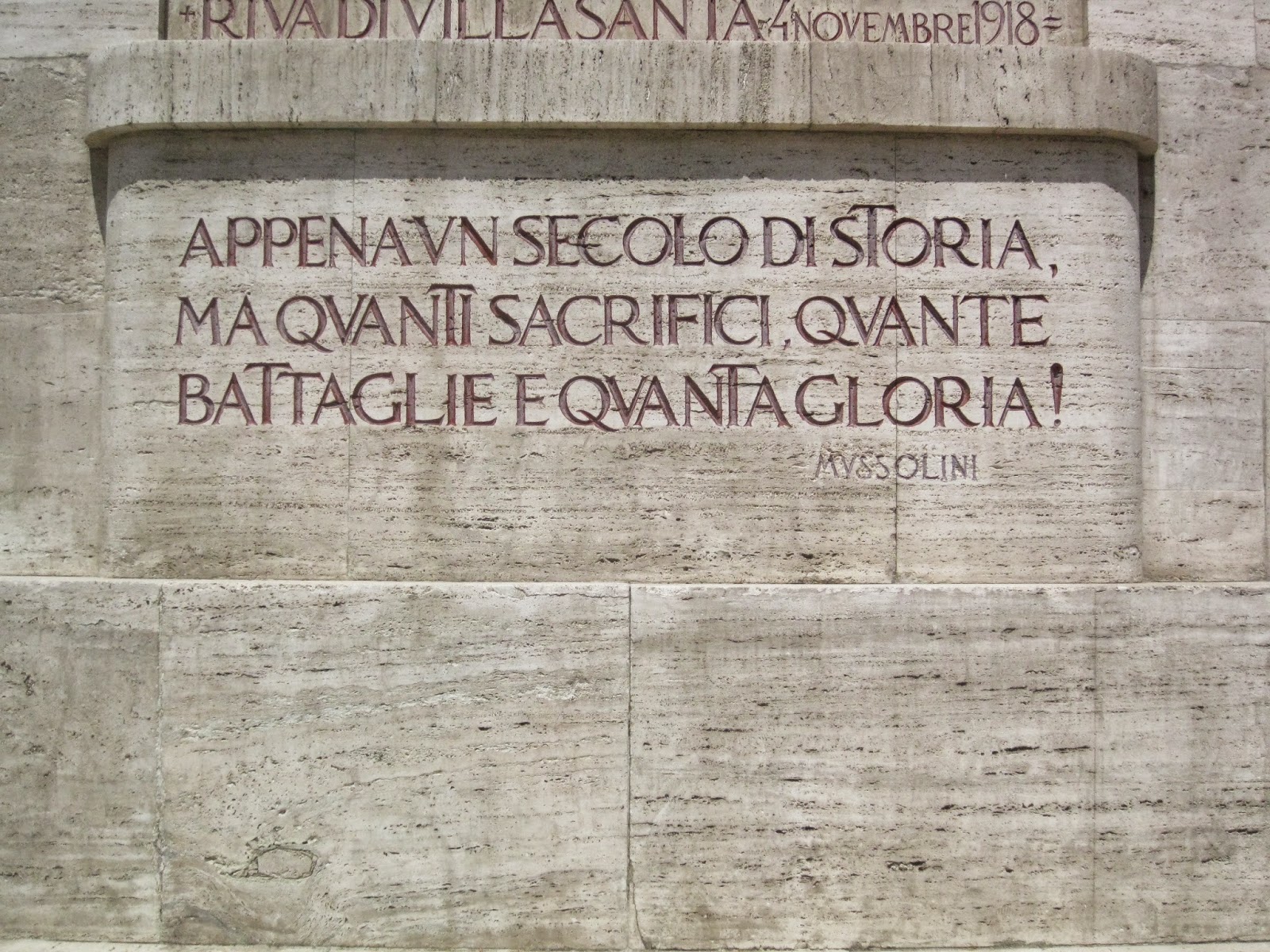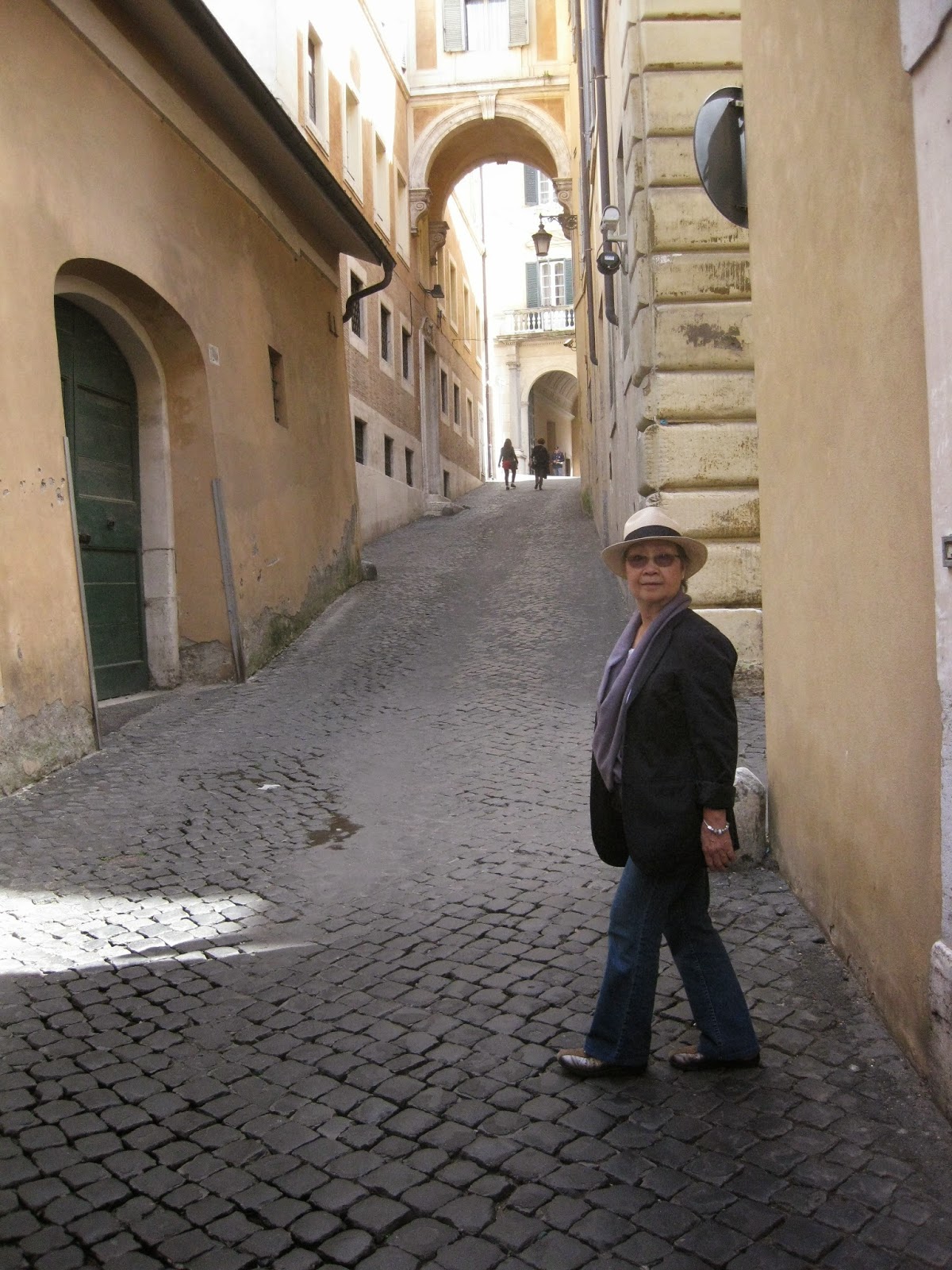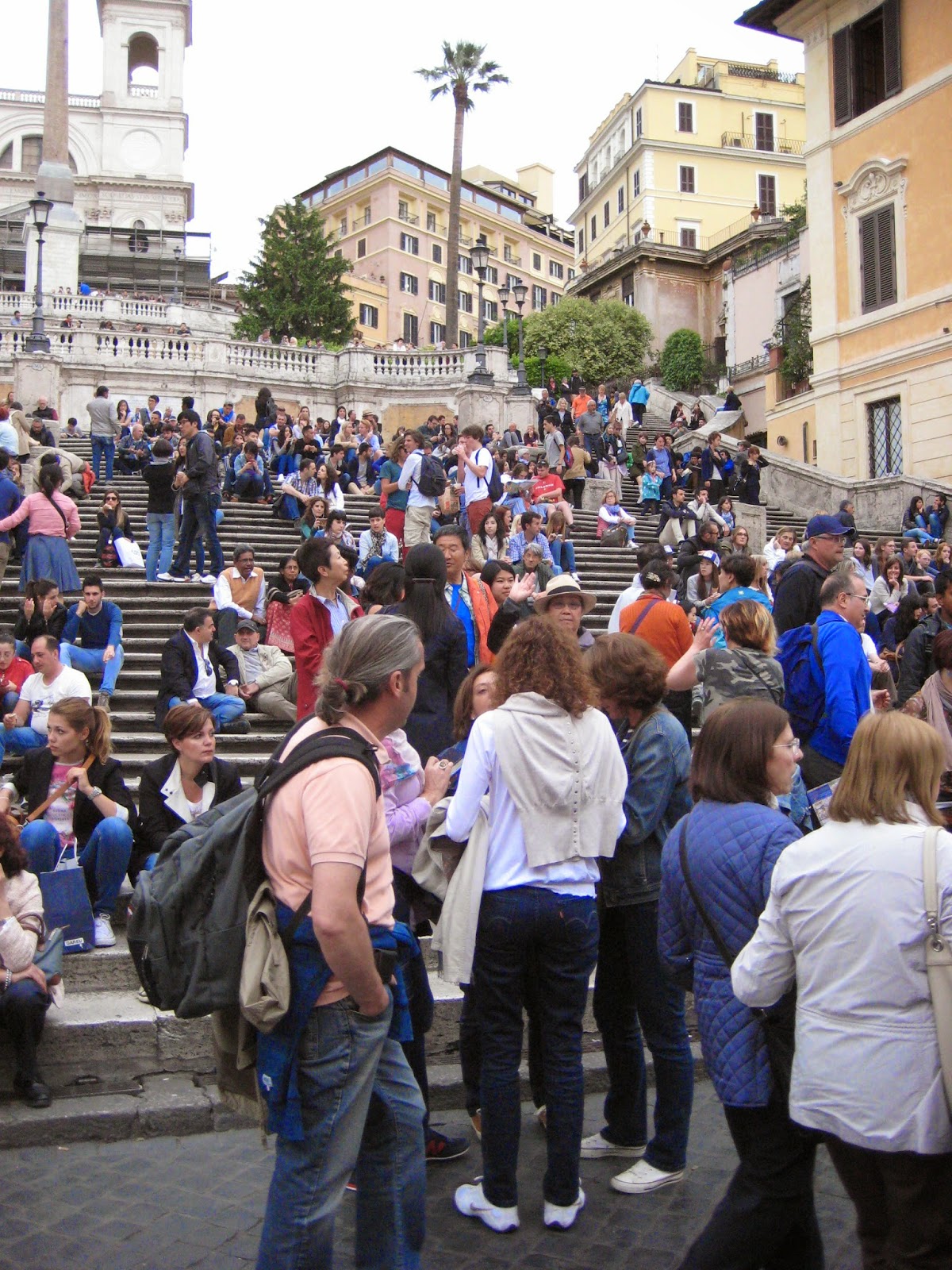We took a
different direction on Sunday morning, up the street away from the center of
Rome toward a nearby square. We made a turn and passed through the ancient city
wall.
We were
strolling there when we came across a monument with a bronze soldier on top. It
commemorate the Bersaglieri, a corps of infantry in the Italian army. The
monument is across from Porta Pia, which is a gate added to the old Imperial
city wall in the 16th century by Pope Pius IV. The gate isn’t particularly
pious, but is named for a guy named Pius.
We learned
shortly later that it was here, on Sept. 20, 1870, that the Bersaglieri’s
artillery breached the wall of the city and the troops stormed in. Their
successful entry into Rome completed the unification of Italy.
The
interesting thing about this soldier monument is the date, 1936, maybe around
the time that Mussolini was speaking to the ten thousand. Certainly it was a
time when Mussolini was speaking to someone.
There’s a
quote attributed to him on the side of the base. From what I can make out, it
says: “Just a century of history, yet how many sacrifices, how many battles,
how much glory.”
The
Bersaglieri were formed in 1836 by somebody named La Marmora, which may mean
marble.
The Porta
Pia is closed to traffic. The street now called Via XX Settembre divides and
goes around it. The gate originally let traffic in through a large wooden door
(now locked) in the middle of the structure. There were small office buildings
on either side. The old offices now house a museum of the Bersaglieri. One side
is early stuff, complete with swords. Mannequins display historical uniforms.
Since I saw
the monument, I have learned a few details about the Bersaglieri. They are a
highly mobile, fast-moving infantry unit, created to serve the Piedmontese, who
couldn’t afford cavalry. Their dress uniforms are topped by a wide-brimmed hat
with black feathers. They put the feathers on their helmets.
The museum
has a shrine to La Marmora. My Italian being what it is, my reading of
inscriptions in the shrine telll me that he died of cholera during the Crimean
War. Where was Florence Nightingale when he needed her?
I found out
later that there is a tomb here, not for La Marmora, but for Enrico Toti, a
one-legged Bersagliere who threw his crutch at the enemy before he died. He
also became an accomplished bicyclist after he lost his leg. Don’t take my word
for it. Look him up on Google.
The other
side of the museum gets creepy, of course, because it is talking about distinguished
service in places like the Russian Front and Spain. And we all know whose side
they were on back then. This room contains automatic rifles and a mortar.
We walked
down the via and started to see some familiar sights, a men’s store called Bac
& Harry’s, for instance. We were lost here briefly on Friday when we first
left the Hotel Priscilla.
Joanna
wanted to go back to Pepy’s Bar for lunch, so get this—I actually found the
way. We took Via Venti Settembre to an intersection with four fountains. Joanna
noticed the fountains first. We turned right on Via delle Quattro Fontane,
paused in the garden of the Palazzo Barberini (now a national museum), passed
the notorious leather goods shop, and went into Pepy’s to say hello to our
usual waiter.
We had to wait
a couple of minutes for a table, and while we stood in front of the
refrigerator case I noticed that they had some Italian craft beers, including
an IPA called CarAibi. It was the first IPA I had in at least two weeks and
went very well with the salad.
When the
rigatoni alla Amatriciana came, I switched to Montepulciano. Beer goes with
almost everything. Maybe not corn flakes, but just about anything else. But
wine is superb with pasta.
Nobody stole
anything from us, so after lunch we continued walking in what Rick Steves calls
the Heart of Rome.
We were near
the Trevi Fountain and decided to try to something different. A street passes a
guard house. It looks like a dead end at a prison gate, but then we saw
civilians going up. So we did too. There’s nothing up there but a right turn
down a street of steps. So we went down.
We wandered
some really charming Old World alleys that I may be able to find again in
another life. I was someplace else, so I was happy.
After a
while, we had to stop. I was thirsty so I ordered two Campari and sodas,
pretending that Joanna was going to drink one of them. She did take some of
hers, so I had maybe one and three-quarters.
While we
were sitting at the sidewalk table, Joanna noticed a file of soldiers coming
down a hill. What the hell? They’re in camouflage, so they really stood out in
the city. they were marching down some steps and turning into a doorway at the
top of the hill. They even had guns. But no black feathers, so they probably
weren’t Bersaglieri.
All right,
this looks interesting. So after we overpaid for our drinks, we climbed up the
hill and came to the steps, which we climbed. And we discovered an imposing
prospect of just about nothing.
There were
some public buildings. You can tell because of the Italian and European Union
flags. There was an empty square paved with black blocks, like most of the old
city streets. A couple of guys in what may be Italian navy uniforms stood by a
door and shouldered rifles.
We’re at one
fence full of people. There’s another fence full of people across the way. There’s
nothing but smooth rocks in between. What the fu?
I do the
natural thing for a stranger. I look at the map and guess. My best guess is
that it’s the Quirinale Palace, the former home of the kings of Italy. The
royal family, the Savoys, have run off to Switzerland. I’m not sure who chased
them or why.
The
Quirinale is now the official residence of the president of Italy.
That leaves
a question. What if the Savoys come back? Where will the president live?
I can’t say.
I don’t understand Italian politics.
We wound up
back at Campo di Fiori for dinner. The place is ringed with great, and
reasonable eateries. Joanna had a craving for tripe. Sounded good to me. We
tried Baccanale, where we had eaten once before. We were seated and ordered.
They had run out of tripe.
We left and
went next door. Apparently that place shares the kitchen with Baccanale. No
luck. So we walked two restaurants over, to La Romanesca, where we were assured
that the tripe supply was sound.
We had
spaghetti carbonara. We had tried two previous dishes of the same name. One was
made with tomato and thick pieces of fried pancetta, which was excellent.
Another seemed to be a cream sauce, and was disappointing.
La Romanesca’s
version had no tomato and was very good. It was yellow with egg. Indeed, a good
breakfast pasta, with egg and bacon.
Joanna
started to fall asleep after dinner, so we took a cab back to the hotel.
It was a
good night, gang. As always, I hope yours is good too.
May 20
Carbonara and tripa a la Romana in
one meal? How great does life get?
I made my own pasta for lunch, with
leftover veal and rabbit meat, dried crepes, new local garlic (too much for
most; just enough for me), and a tomato. Heaven with a white Vacqueyras.
Have a great trip back!
Best,
Larry


























